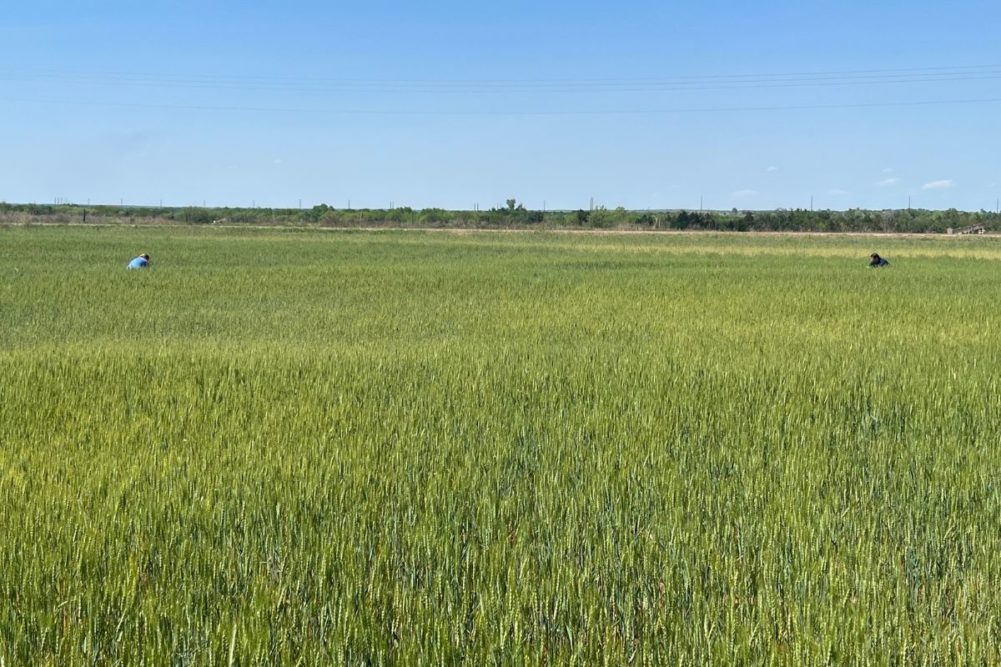MANHATTAN, KANSAS, US — After an extensive tour of the largest hard red winter wheat production state, wheat tour scouts circled back to the tour’s genesis in Manhattan, Kansas, and reported slightly higher estimated yields from the central portion of the state, and said the crop was in better shape than in the western and southern cropping districts seen a day earlier.
On Day 3 of the Wheat Quality Council’s 2023 hard winter wheat tour, scouts made 52 field stops during an abbreviated day in the fields taking them from Wichita, Kansas, US, to Manhattan. The tallied yield estimate from those stops was 44.1 bushels per acre (bpa). That compared with an average yield estimate of 55.2 bpa based on 48 field stops on Day 3 of the 2022 tour.
All told, scouts made 652 field stops over the three-day period, compared with 550 a year earlier. The total was the largest since scouts measured 655 fields during the 2016 tour and the third-highest field stop total in the past 20 years. Vehicles averaged 26 stops apiece in the three days. The average yield estimate for the entire tour was 30 bpa, compared with 39.7 bpa in 2022. It was the tour’s lowest average yield estimate in the past 20 years of records released by the WQC and Kansas Wheat.
At the final meeting May 18, attendees were invited to submit an estimate of the 2023 winter wheat production in Kansas. Fifty-three people took part and the average guess was 178 million bushels.
Dave Green, executive vice president of the WQC and one of the tour’s organizers, said the tour’s production projection is typically close to the US Department of Agriculture’s figure due to the proximity of the respective crop appraisals. The USDA on May 12 pegged Kansas winter wheat production at 191.4 million bushels.
“The numbers are close, as they usually are, but there are around 60 days until harvest, which is an eternity for a crop, and a lot of really good things and a lot of really bad things can happen between now and then,” Green said.
The tour’s 106 participants hailed from the following sectors: 26.7% from milling, 15.2% from grain companies, 13.3% producers, 12.4% bakers, 11.4% from the government, 6.7% from academia, 5.7% from agriculture media, and 8.6% from “other” areas.
More Reading




